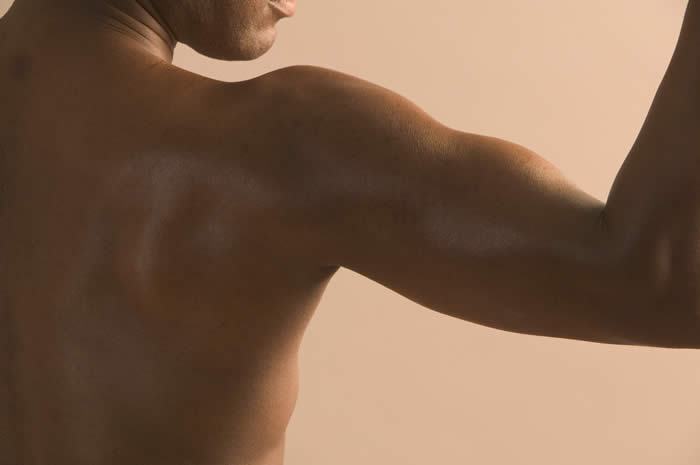November 2014
Why Delayed Onset Muscle Soreness (DOMS) Doesn’t Equate to Physical Success
by Nick A. Titley, M.S., NPI-Certified Posture Specialist
I recently read an article about muscle soreness as a new workout goal. It seems being sore after a workout is more important than the effectiveness of the workout in helping one achieve their overall goal. Muscle soreness doesn’t equate to an effective workout and it’s not something you should use to gauge your workout, or to strive to achieve in every training session.
When was the last time you performed an exercise or activity and woke up sore the following day? Did the soreness remain even after a few more days? Did your muscles feel achy and was it difficult to move? That sore, uncomfortable feeling when you move is called delayed onset muscle soreness (DOMS). The soreness you feel doesn’t hit you until the day after a strenuous workout and that’s why it’s considered “delayed onset.”
An article written by John David Maes and Len Kravitz mentions that DOMS is typically experienced by all individuals regardless of fitness level; it’s a normal physiological response to increased exertion. Delayed soreness typically begins to develop 12-24 hours after you exercise and may produce the greatest pain between 24-72 hours |
. |
If you’re doing physical activities that are unfamiliar or more intense than your usual routine or you are just starting to exercise; then there’s a higher chance of experiencing DOMs. Alongside soreness you may also experience muscle stiffness, swelling, tenderness to the touch, temporary reductions in strength and in movement, and decreased joint range of motion.
The American College of Sports Medicine (ACSM) states that the exact cause of DOMS is complex; it’s commonly associated with lactic acid accumulation in the muscle, but it appears to be a side effect of the repair process that develops in response to microscopic muscle damage. In case you were worried about the microscopic muscle damage allow me to put your mind at ease, the micro trauma that happens in muscles after a workout isn’t dangerous and it’s actually a part of the process for building them.
So how did DOMS and feeling achy become the gauge for a workout’s effectiveness? There are many fitness professionals, trends, fads and programs that advocate for higher intensity routines. These programs boast phrases like: “gut busting,” “fat torching,” “muscle building,” “hardcore” and “high intensity” in their descriptions. These programs can make you so sore you’re unable to walk or move properly the next day, but is that really the goal and is it helping the general exerciser achieve their goals?
Muscle soreness isn’t a gauge for success, but it’s common to hear people chatting about their soreness and discussing how they felt days after. While some programs encourage working till you’re sore and try to instill a “no pain, no gain,” mentality, they miss the point of why you’re training in the first place.
While constantly pushing yourself to the limit sounds ambitious, it’s dangerous if you push yourself too hard, too often; you may incur a serious injury in which case you won’t be training any time soon. Muscle soreness is just that; it doesn’t mean that your workout was effective toward achieving your personal goals. Think about the program you’re on and examine if it’s helping you achieve your results.
The American Council on Exercise (ACE) website says that training more aggressively doesn’t equate to faster results. While the body does require a certain degree of overload to improve its fitness, training too much and too hard can cause lack of motivation, overuse injuries and overtraining syndrome.
So what should you focus on and how do you deal with it? You need to complete both a fitness and goal assessment first. Think about the reasons you’re doing your program and be open about your current fitness level. Make sure you warm-up before your workouts and seek to progress steadily through your program. If you do become sore, rest is your best option.
The ACSM website explains that you could use ice packs, massage and oral pain relievers while sore. Please understand that these methods reduce pain, but your body still needs to recover; don’t be afraid to take a day or two off if the soreness is too much.
Muscle soreness should never be the goal of a workout and doesn’t equate to an effective exercise session. Remember the reason you’ve started exercising and proceed at your own pace. If you do become sore, rest is your best option. Be honest and open about your capabilities and with patience you’ll be on your way toward goal achievement.
References:
- Sforzo, Gary, and William Braun. "Delayed Onset Muscle Soreness (DOMS)." American College of Sports Medicine. American College of Sports Medicine, 1 Jan. 2011. Web. 3 Nov. 2014. <acsm.org/docs/brochures/delayed-onset-muscle-soreness-(doms).pdf>.
- Maes, Johndavid, and Len Kravitz. "Treating and Preventing DOMS." DOMS. University of New Mexico, 1 Jan. 2003. Web. 3 Nov. 2014. <unm.edu/~lkravitz/Article folder/domos.html>.
- McGrath, Christopher. "Myths and Misconceptions: Muscle Soreness." ACE Fit. American Council on Exercise, 9 Dec. 2013. Web. 3 Nov. 2014. <acefitness/acefit/healthy-living-article/59/3654/myths-and-misconceptions-muscle-soreness/>.
|
